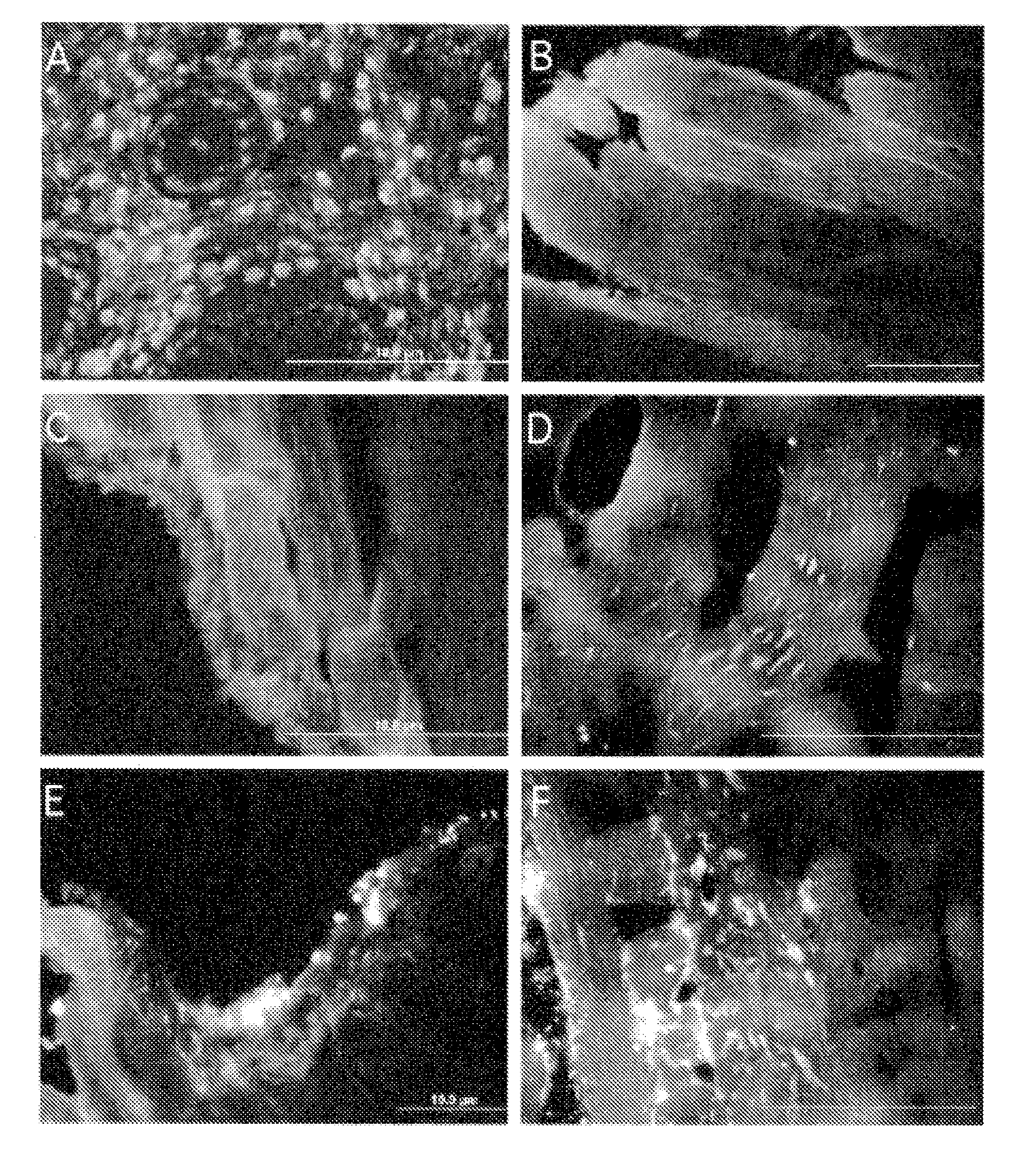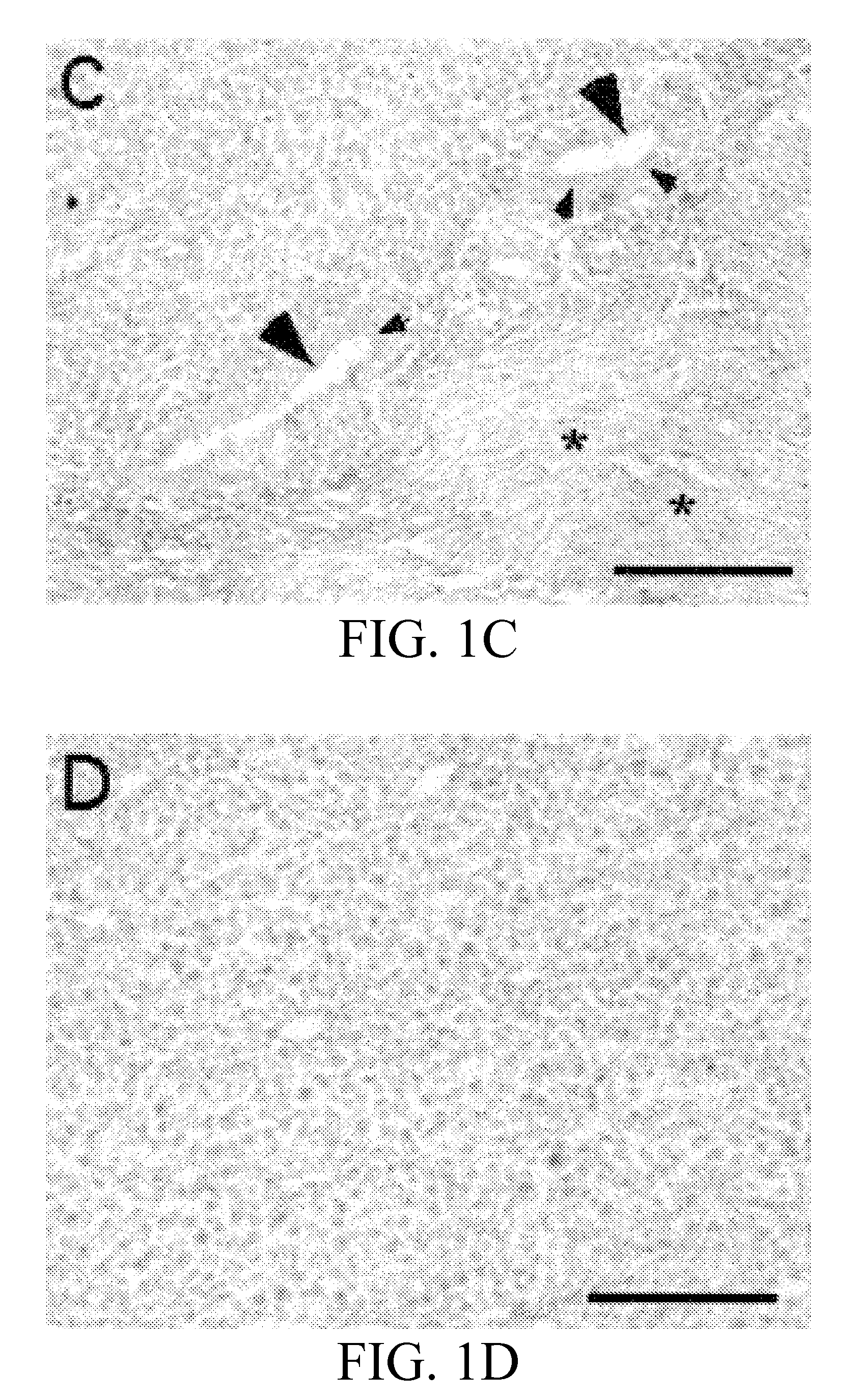Endometriosis cell targeting peptide and uses thereof
a technology of endometriosis cell and targeting peptide, which is applied in the direction of peptide/protein ingredients, instruments, drug compositions, etc., to achieve the effect of modulating kinase activity and enhancing imaging
- Summary
- Abstract
- Description
- Claims
- Application Information
AI Technical Summary
Benefits of technology
Problems solved by technology
Method used
Image
Examples
example 1
1. Example 1
Materials and Methods
[0122] Phage library and antibodies. A T7 phage library displaying random 9-mer peptide sequences constructed in the T7 Select 415-lb vector (Novagen) (Essler, M. & Ruoslahti, E., 2002). Polyclonal rabbit anti-T7 phage antibodies do not cross-react with frozen and paraffin sections of normal human and mouse tissues (Essler, M. & Ruoslahti, E., 2002).
[0123] Synthetic peptides. The following peptides were synthesized by AnaSpec, San Jose, Calif.: z13, VRRADNRPG (SEQ ID NO:3); cys-z13, CVRRADNRPG (SEQ ID NO:6); cys-m2, CRGMSDTTAL (SEQ ID NO:5); fluorescent FITC-z13, and fatty acid conjugated C16-z13. Each cys-z13 and cys-m2 was bound to fluorescent nanocrystal Qdot605 using a Qdot antibody conjugation kit (Quantum Dot, Hayward, Calif.), according to the manufacturer's protocol.
[0124] Preparation of liposomes. Twenty μl of C16-z13 peptide (10 mM in chloroform:methanol 2:1) was mixed with 20 μl phosphatidylcholine (100 mM in chloroform) and 10 μl chol...
example 2
2. Example 2
[0142] Liposomes were made that included C16 fatty acid-conjugated z13 peptides, the apoptosis-inducing glycolipid, GD3 (De Maria, R, 1997; Malisan, F., 2002), or both. GD3 is a natural and widely expressed glycosphigolipid. GD3 localizes in the plasma membranes. However, when GD3 is localizes to the cytoplasm, GD3 binds to the mitochondrial membranes and induces apoptosis. When liposomes containing only GD3 were added to human endometrial Ishikawa cells, the cells were killed by apoptosis, albeit inefficiently. However, when liposomes containing both z13 and GD3 were added to Ishikawa cells, the cells were not killed. These result indicate that the receptor for z13 peptide is a membrane protein of sorting pathway, i.e., the receptor bound z13 / GD3 liposomes, internalized to endosomes, then circulated back to the cell surface. Therefore GD3 in the z13 containing liposomes were not delivered to the cytoplasm of the target cells. Inclusion of internalization sequences in li...
PUM
| Property | Measurement | Unit |
|---|---|---|
| pH | aaaaa | aaaaa |
| thickness | aaaaa | aaaaa |
| length | aaaaa | aaaaa |
Abstract
Description
Claims
Application Information
 Login to View More
Login to View More - R&D
- Intellectual Property
- Life Sciences
- Materials
- Tech Scout
- Unparalleled Data Quality
- Higher Quality Content
- 60% Fewer Hallucinations
Browse by: Latest US Patents, China's latest patents, Technical Efficacy Thesaurus, Application Domain, Technology Topic, Popular Technical Reports.
© 2025 PatSnap. All rights reserved.Legal|Privacy policy|Modern Slavery Act Transparency Statement|Sitemap|About US| Contact US: help@patsnap.com



